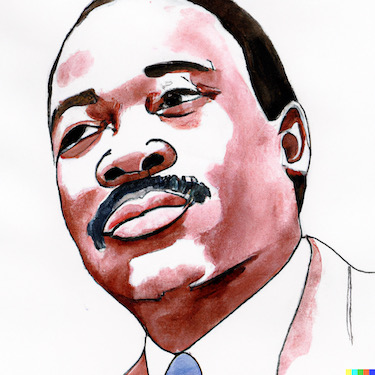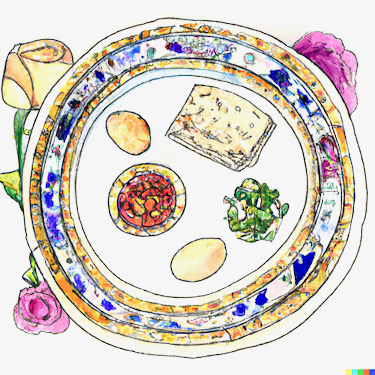A Global Source for More than a Decade
Holidays & Festivals expert Stephanie Fenton is internationally known for her reporting on major holidays, festivals and milestones that shape community life around the world. There are many other calendars that claim to provide this information at the click of a link or an app, but Stephanie is the leading journalist focused every week of the year on actively reporting about these milestones. That’s important, because dates and times and even the names of these observances vary—as well as the meaning of these observances in various countries and cultures. In her columns, Stephanie explains the fascinating stories behind these events, advises readers on newsy updates—and always provides an array of links to learn more about everything from the history of the holiday to DIY holiday-related crafts and tasty traditional recipes.
It’s simple to find these columns. Just go to the master year-long calendar via InterfaithHolidays.com
Got a question? Perhaps you’re questioning one of the listed dates—or you wish we would list an observance that particularly interests you. Please, contact us at [email protected]
Holidays and Festivals January 2024
JANUARY is named for Janus, the Roman god associated with beginnings and transitions. The many month-long observances in various parts of the world include a special focus on Alzheimer’s disease (Canada) and on combatting human trafficking and slavery (U.S.). Over the past two decades in the U.S., January also has been designated National Mentoring Month.
1—Mary, Mother of God (Catholic Christian)
1—Feast of St. Basil (Orthodox Christian)
1—Shogatsu/Gantan-sai (New Year) (Shinto)
5—Twelfth Night (Christian)
6—Epiphany (Christian, but observed in some denominations on the nearest Sunday.)
6—Theophany (Feast of the Epiphany) (Orthodox Christian)
6—Dia de los Reyes (Three Kings Day) (Christian)
7—Feast of the Nativity (Orthodox Christian, Julian calendar)
8—Baptism of the Lord (Christian)
13—Maghi Lohri (Sikh)
15—Martin Luther King, Jr. Day (U.S.)
15—Makar Sankranti / Pongal (Hindu)
16—National Religious Freedom Day (established by the Virginia General Assembly in 1993)
17—Jayanti (birthday) of Guru Gobindh Singh (Sikh)
18—Lunar Bodhi Day (Buddhism)
18—Week of Prayer for Christian Unity begins (Christian)
20—Timkat (Ethiopian Orthodox Christian)
20—Sundown, World Religion Day (Baha’i)
24—Sundown, Tu B’Shvat (Jewish)
25—Conversion of St. Paul (Christian)
25—New Year (Buddhist, Mahayana)
27—International Day of Commemoration in Memory of Victims of the Holocaust (UN)
.
Holidays and Festivals February 2024
FEBRUARY is another echo of ancient Rome, where februum meant “purification.” Among February’s month-long observances are Library Lovers Month and Black History Month in Canada and the U.S. (October in the UK).

For Western Christians, Lent begins with Ash Wednesday on February 14, 2024, so the big Mardi Gras celebrations in New Orleans will begin around Friday February 9. Eastern Orthodox Christians will begin the Fast of Lent in March.
1—Feast of St. Brighid of Kildare (Celtic Christian)
1—Imbolc (Lughnassadh) (Northern/Southern hemisphere) (Wicca, pagan)
2—Candlemas (Presentation of Christ in the Temple) (Christian)
2—Groundhog Day
3—Four Chaplains Day (Interfaith)
6—Sundown, Lailat al Miraj (Isra Mi’raj) (Islam)
11—Our Lady of Lourdes (Catholic Christian)
13—Shrove Tuesday (Mardi Gras) (Christian)
14—Ash Wednesday / Lent begins (Christian)
14—Vasant Panchami (Hindu)
14—St. Valentine’s Day (Christian, international holiday)
15—Parinirvana Day (Nirvana Day) (Buddhist, Jain)
19—Presidents’ Day (U.S.)
24—Magha Puja Day / Sangha Day (Buddhist)
24—Sundown, Lailat al Bara’ah (Mid-Sha’ban) (Islam)
25—Tridion begins (Orthodox Christian)
25—Sundown, Ayyam-i-Ha (Intercalary Days) begins (Baha’i)
29—Sundown, Nineteen-Day Fast begins (Baha’i)
,
Holidays and Festivals March 2024
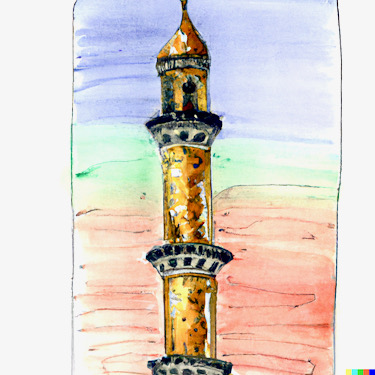
Most Muslims are expecting the fasting month of Ramadan to begin March 10 in 2024. Traditionally, the start of the fast depends on a sighting of the crescent moon.
MARCH‘s name recalls Mars, yet another Roman deity. This year, the moveable season of Lent begins in March for the majority of Christians around the world. Among March’s month-long observances are National Social Work Month and Women’s History Month, which includes International Women’s Day.
1—St. David of Wales (Christian)
10—Meatfare Sunday (Judgment Sunday) (Orthodox Christian)
10—Daylight Saving Time begins
10—Mothering Sunday (UK)
10—Sundown, Ramadan begins (Islam)
13—Birthday of L. Ron Hubbard (Scientology)
17—St. Patrick’s Day (Christian, international holiday)
17—Cheesefare Sunday (Forgiveness Sunday) (Orthodox Christian)
18—Clean Monday / Great Lent begins (Orthodox Christian)
19—St. Joseph’s Day (Christian)
19—Vernal (spring) equinox (Northern Hemisphere)
19—Ostara (Mabon) (Wicca, pagan) (Northern/Southern hemisphere)
19—Sundown, Naw-Ruz (Baha’i)
20—Nowruz (Zoroastrian)
21—International Day of Nowruz
21—Fast of Esther (Jewish) (Note: As the date of the Fast of Esther would fall on Shabbat in 2024, it is transferred to the preceding Thursday)
23—Sundown, Purim (Jewish)
24—Palm Sunday (Christian)
24—Lord’s Evening Meal (Jehovah’s Witness Christian)
24—Feast of Orthodoxy / Sunday of Orthodoxy / Orthodox Sunday (Orthodox Christian)
24—Holika Dahan (Hindu)
25—Holi (Hindu)
25—Hola Mohalla (Sikh)
26—Robert Frost Sesquicentennial
28—Maundy Thursday (Christian)
30—Black (Holy) Saturday (Christian)
31—Easter Sunday (Christian).
Holidays and Festivals April 2024
APRIL‘s origin is debated by scholars but its name may reflect aperire, which means “to open.” Among April’s month-long observances are Arab American Heritage Month and Sexual Assault Awareness Month.
1—Easter Monday (Christian)
5/6—Sundown, Lailat al-Qadr (27th night of Ramadan) (Islam)
8—Annunciation of the Lord (Christian)
(Note: In 2024, this is moved from March 25, since March 25 is the Monday of Holy Week)
9—Ugadi / Gudi Padwa (Hindu)
9—Sundown Ramadan ends (Islam)
13—Baisakhi (Vaisakhi) (Sikh)
17—Swaminarayan Jayanti (Hindu)
17—Rama Navami (Hindu) (Note: Some Hindus begin reading the Ramayana nine days prior to the start of Rama Navami)
19/20—Sundown, First Day of Ridvan (Baha’i) (Note: Global sources currently vary on the timing of Ridvan 2024, with a one-day discrepancy. Stay tuned to our weekly online magazine for an update closer to the season)
22—Fast of the Firstborn (Jewish)
22—Sundown, Pesach (Passover) begins (Jewish)
22—Earth Day
24—New Year (Buddhist, Theravada)
27—Lazarus Saturday (Orthodox Christian)
28—Palm Sunday (Orthodox Christian)
27/28—Sundown, Ninth Day of Ridvan (Baha’i) (Note: Global sources currently vary on the timing of Ridvan 2024, with a one-day discrepancy. Stay tuned to our weekly online magazine for an update closer to the season)
.
Holidays and Festivals May 2024
MAY‘s name also comes from an ancient deity, in this case associated with fertility. Among May’s month-long observances are special devotions to Mary in Catholic communities, Asian Pacific American Heritage Month, Jewish American Heritage Month and Military Appreciation Month.
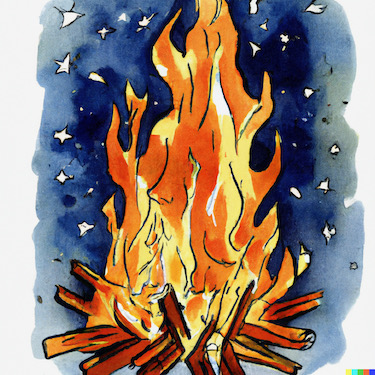
If you see a bonfire in a Jewish community this month, it may be a community commemoration of Lag B’Omer.
1—Beltane (Samhain) (Wicca, pagan) (Northern/Southern hemisphere)
30/1—Sundown, Twelfth Day of Ridvan (Baha’i) (Note: Global sources currently vary on the timing of Ridvan 2024, with a one-day discrepancy. Stay tuned to our weekly online magazine for an update closer to the season)
2—National Day of Prayer (U.S.)
3—Holy Friday (Orthodox Christian)
4—Holy Saturday (Orthodox Christian)
5—Great and Holy Pascha (Easter) (Orthodox Christian)
5—Cinco de Mayo
5—Sundown, Yom HaShoah (Jewish)
9—Ascension of the Lord (Ascension of Jesus) (Christian)
(Note: Observed in some denominations on nearest Sunday, May 12, in 2024)
10—Akshaya Tritiya (Hindu, Jain)
12—Mother’s Day (U.S.)
12—Sundown, Yom HaZikaron (Jewish)
13—Sundown, Yom Ha’Atzmaut (Jewish)
19—Pentecost Sunday (Christian)
20—Whit Monday (Christian)
22—Sundown, Declaration of the Bab (Baha’i)
23—Vesak (Buddha Day) (Buddhist)
(Note: Observance dates vary)
25—Sundown, Lag B’Omer (Jewish)
26—Trinity Sunday (Christian)
27—Memorial Day (U.S.)
27—Sundown, Ascension of Baha’u’llah (Baha’i)
.
Holidays and Festivals June 2023
JUNE brings a wide range of festivals and summer-themed observances in communities around the Northern Hemisphere. In the U.S., Pride Month commemorates the Stonewall Riots in June 1969 and the birth of the gay-rights movement.

June brings the feast of St. Columba, who established a Christian community on Iona island off the northwest coast of Scotland. To this day, pilgrims consider Iona holy and continue to travel to the tiny island.
2—Most Holy Body and Blood of Christ (Corpus Christi) (Catholic Christian)
7—Sacred Heart of Jesus (Catholic Christian)
9—St. Columba of Iona (Christian)
11—Sundown, Shavuot (Jewish)
13—Holy Ascension / Feast of the Ascension (Orthodox Christian)
14—Flag Day (U.S.)
14—Sundown, Hajj begins (Islam)
15—Sundown, Waqf al Arafa (Day of Arafat) (Islam)
16—Father’s Day (U.S.)
16—Martyrdom of Guru Arjan Dev Sahib (Sikh)
16—Sundown, Eid al-Adha (Islam)
19—New Church Day (Swedenborgian Christian)
19—Juneteenth
20—Summer solstice (Northern Hemisphere)
21—Litha (Yule) (Wicca, pagan) (Northern/Southern hemisphere); Midsummer
23—Pentecost (Orthodox Christian)
24—St. John the Baptist (Christian)
29—Feast of Sts. Peter and Paul (Christian)
30—The Sunday of All Saints (Orthodox Christian)
.
Holidays and Festivals July 2023
JULY‘s name honors Julius Caesar, who was born in this month. More summer-time festivals are sprinkled around the Northern Hemisphere, including National Hog Dog Month and National Ice Cream Month in the U.S. That’s appropriate since this is the month of American Independence Day.
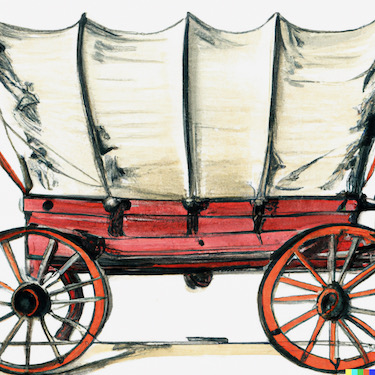
“Wagons, ho!” If you’re planning to visit Utah this year, don’t miss the festivities leading up to Pioneer Day.
4—Independence Day (U.S.)
7—Sundown, Hijri (New Year) (Islam)
8—Sundown, Martyrdom of the Bab (Baha’i)
15—Obon (Ullambana) (Buddhist) (Note: This observance is Shichigatsu Bon; Hachigatsu Bon / Kyu Bon, or “Old Bon,” commences in August)
16—Sundown, Ashura (Islam)
20/21—Asalha Puja Day (Dharma Day) (Buddhist)
23—Birthday of Haile Selassie (Rastafari)
23—Fast of Tammuz 17; The Three Weeks begins (Jewish)
24—Pioneer Day (Mormon)
.
Holidays and Festivals August 2023
AUGUST was named after another Roman emperor, Augustus. Among the month-long observances are Happiness Happens (no kidding!) and National Immunization Awareness Month, which is promoted by the CDC in the U.S.
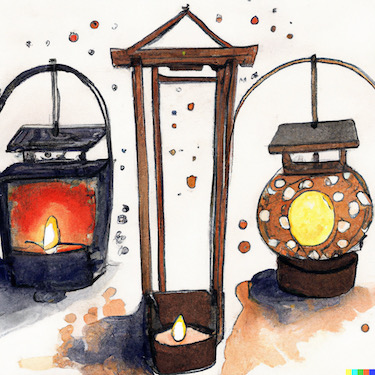
The festival of Obon (or simply “Bon”) is marked at various times around the world, sometimes depending in the U.S. on a convenient date for a local community to come together. Whenever Obon is observed, you are likely to see candle-lit lanterns.
1—Lammas (Christian)
1—Lughnassadh (Imbolc) (Wicca, pagan) (Northern/Southern hemisphere)
1—Dormition Fast (Orthodox Christian)
6—Feast of the Transfiguration, Transfiguration of the Lord (Catholic Christian, Anglican Christian, Orthodox Christian)
12—Sundown, Tisha B’Av (Jewish)
13—Obon (Ullambana) (Buddhist) (See note in July Obon entry) (Note: This date may differ among regions of Japan. Obon in Okinawa will fall on August 28-30 in 2024)
15—Dormition of the Theotokos (Orthodox Christian)
15—Assumption of the Blessed Virgin Mary (Christian)
18—Sundown, Tu B’Av (Jewish)
19—Raksha Bandhan (Hindu)
26—Krishna Janmashtami (Hindu)
31—Paryushan Parvarambha begins (Jain)
.
Holidays and Festivals September 2023
SEPTEMBER‘s name is a remnant of the fact that Romans once had 10 months and this was the seventh, hence “sept.” A whole series of cancer-awareness observances have been clustered in September, including special efforts to highlight childhood cancers, gynecologic cancers, leukemia, lymphoma, ovarian cancer and thyroid cancer.
1—Ecclesiastical New Year (Orthodox Christian)
2—Labor Day (U.S.)
7—Ganesh Chaturthi (Hindu)
7/8—Samvatsari Parva begins (Jain)
8—Nativity of the Virgin Mary/Theotokos (Christian)
11—Patriot Day (U.S.)
11—Enkutatasch (Ethiopian New Year) (Rastafari, Ethiopian Orthodox)
15—Sundown, Mawlid an-Nabi (Islam)
22—Mabon (Imbolc) (Wicca, pagan) (Northern/Southern hemisphere)
22—Autumnal (fall) equinox (Northern Hemisphere)
27—Meskel (Ethiopian Eritrean Orthodox Christian)
29—Michael and All Angels (Michaelmas) (Christian)
.
Holidays and Festivals October 2023
OCTOBER retains its old reference to this being the eighth month in the old Roman system, thus “oct.” One of the biggest cancer-awareness campaigns—Breast Cancer Awareness Month—takes place each October. This also is National Bullying Prevention Month.
2—Sundown, Rosh Hashanah (Jewish)
3—Navaratri (Hindu)
4—St. Francis Day (Blessing of the Animals) (Catholic Christian)
11—Sundown, Yom Kippur (Jewish)
12—Daesara, Dussehra (Hindu)
14—Columbus Day (U.S.)
14—Indigenous Peoples Day
14—Thanksgiving (Canada)
16—Sundown, Sukkot (Jewish)
18—St. Luke, Apostle and Evangelist (Christian)
23—Sundown, Shemini Atzeret (Jewish)
24—Sundown, Simchat Torah (Jewish)
31—Reformation Day (Protestant Christian)
31—All Hallows Eve (Christian)
31—Samhain (Wicca, pagan)
.
Holidays and Festivals November 2023
NOVEMBER was named for novem or “ninth,” continuing the ancient Roman custom of numbering months. This is Native American History Month, We’ve got books: Dancing My Dream as well as The Flavors of Faith, among others. November also is National Family Caregivers Month and National Hospice Month.
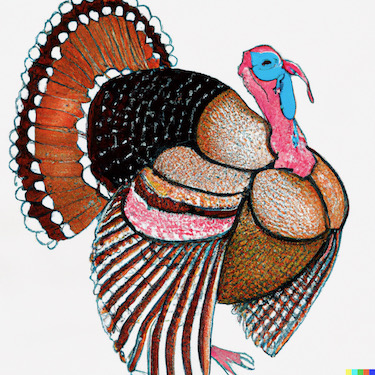
Americans know that November means Thanksgiving—but did you know that Canadian’s celebrate the holiday in October?
1—All Saints (Christian)
1—Diwali (Deepavali) (Hindu, Jain, Sikh)
1—Sundown, Birth of the Bab (Baha’i)
2—All Souls’ Day (Catholic Christian)
2—Sundown, Birth of Baha’u’llah (Baha’i)
3—Daylight Saving Time ends
11—Veterans Day (U.S.)
15—Nativity Fast begins (Orthodox Christian)
24—Christ the King (Christian)
24—Martyrdom of Guru Tegh Bahadur Sahib (Sikh)
24—Sundown, Day of the Covenant (Baha’i)
26—Sundown, Ascension of Abdu’l-Baha (Baha’i)
28—Thanksgiving (U.S.)
30—St. Andrew’s Day (Christian)
.
Holidays and Festivals December 2023
DECEMBER, with dec for “ten,” wraps up the old Roman system of numbering months.
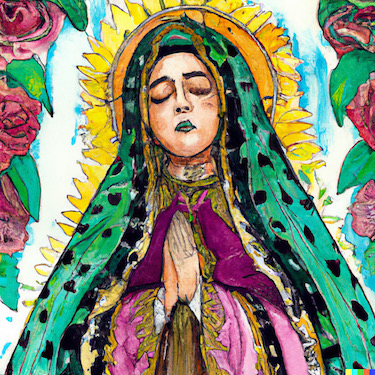
Everyone knows December brings Christmas, but millions of Catholics around the world also anticipate this month for the annual Feast or Our Lady of Guadalupe.
1—First Sunday of Advent (Advent begins) (Christian)
6—St. Nicholas Day (Christian)
8—Bodhi Day (Rohatsu) (Buddhism)
9—Immaculate Conception of Mary (Catholic Christian) (Note: This Solemnity is moved from December 8 in 2024, as December 8 is the Second Sunday of Advent)
12—Feast of Our Lady of Guadalupe (Catholic Christian)
16—Posadas Navidenas begins (Hispanic Christian)
21—Yule (Christian, Wicca, pagan)
21—Winter solstice (Northern Hemisphere)
25—Christmas (Nativity) (Christian)
25—Feast of the Nativity (Orthodox Christian)
25—Sundown, Hanukkah (Chanukah) begins (Jewish)
26—Kwanzaa begins
26—Feast of St. Stephen, the First Martyr (Christian)
28—Holy Innocents (Christian)
29—Feast of the Holy Family (Catholic Christian)
31—Watch Night (Christian)
..
NOTE TO READERS
We continue to update this list, month by month. As you read the list, you may discover we have missed a fascinating observance or detail. If so, please email us at [email protected].

